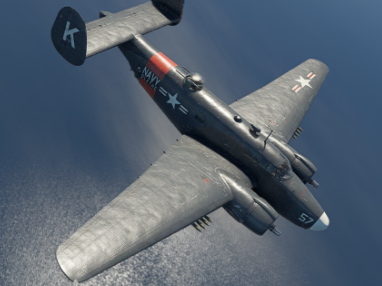
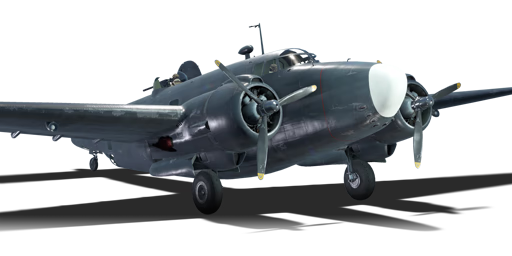

The Lockheed PV-2 "Harpoon" was a significant development from the PV-1 "Ventura". The Harpoon, much like the name implies, was intended for maritime duties. One of the biggest complaints about the PV-1 was its lacklustre takeoff performance. To fix that, the PV-2 featured a longer wingspan to increase lift. Further modifications included more provisions for fuel, the removal of the bombardier's position, and other air frame changes. The R-2800-31 Double Wasp engine was kept in place from the Ventura. Performance was expected to be a bit worse except for range and take-off due to the extra fuel provisions and wing change. During initial testing, it was found that the wings would wrinkle, and another completely new redesign was needed to fix the issue. After the problem was remedied, the PV-2 Harpoon was quite popular within service and was also exported to other countries like Brazil and New Zealand.
The PV-2D was introduced in Update 1.67 "Assault" as a reward for the 2017 World War Two: Chronicle event. It is quite a rare aircraft but packs a much more powerful punch compared to its predecessor, the B-34 "Lexington". It features a much larger bomb load capacity, more defensive armament, and an incredible eight offensive 12.7 mm machine guns. Unfortunately, the Harpoon does not receive late-war .50 cal belts. However, it does receive two belts (stealth and universal), which have a belt composition of 4 out of 5 rounds being incendinary or AP-I. With its bomber spawn and flight performance, players can easily bomb targets before switching to attack other enemy bombers or fighters. Thanks to its flaps, the Harpoon can turn tight, which can surprise many enemy fighters. Overall, the PV-2D Harpoon is an excellent aircraft due to its numerous capabilities.
flaps
flaps
flaps
brake
| Belt | Belt filling | Armor penetration (mm) at a distance: | |||||
|---|---|---|---|---|---|---|---|
| 10 m | 100 m | 500 m | 1000 m | 1500 m | 2000 m | ||
| T/Ball/Ball/I/AP-I | 28 | 26 | 18 | 11 | 7 | 4 | |
| AP-I/AP-I/AP-I/T/I | 28 | 26 | 18 | 11 | 7 | 4 | |
| T/AP/AP/AP/AP-I/I | 30 | 27 | 20 | 13 | 9 | 6 | |
| T/T/T/T/T/AP-I | 28 | 26 | 18 | 11 | 7 | 4 | |
| AP/AP-I/AP-I/I/I | 30 | 27 | 20 | 13 | 9 | 6 | |
| Belt | Belt filling | Armor penetration (mm) at a distance: | |||||
|---|---|---|---|---|---|---|---|
| 10 m | 100 m | 500 m | 1000 m | 1500 m | 2000 m | ||
| T/AP/I/AP-I | 30 | 27 | 20 | 13 | 9 | 6 | |
| AP/AP/AP/T | 30 | 27 | 20 | 13 | 9 | 6 | |
| AP-I/AP-I/AP-I/T | 28 | 26 | 18 | 11 | 7 | 4 | |
| Name | Weight | Slot | ||||
|---|---|---|---|---|---|---|
| 4 × | 251.2 kg | 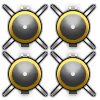 |  | |||
| 2 × | 233.3 kg | 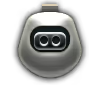 |  | |||
| 500.8 kg |  |  | ||||
| 494.4 kg |  |  | ||||
| 2 × | 1,068.3 kg | 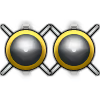 | ||||
| 6 × | 707.4 kg | 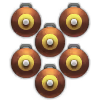 | ||||
| 6 × | 1,455.6 kg |  | ||||
| 4 × | 2,003 kg | 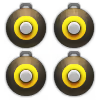 | ||||
| 4 × | 1,977.6 kg | 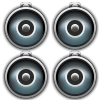 | ||||
| 964.8 kg |  | |||||







 2 x (70 / 150 / 250) %
2 x (70 / 150 / 250) % 
 2 x 136 %
2 x 136 % 

Flight performance | |
|---|---|
Survivability |
|---|
Weaponry | ||
|---|---|---|
